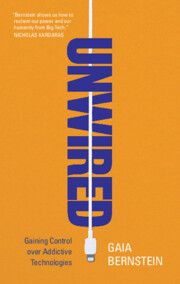Refine search
Actions for selected content:
48287 results in Computer Science
I - Logos. The Language and Thought of Man and the World
-
- Book:
- The Game of the World
- Published by:
- Edinburgh University Press
- Published online:
- 17 November 2023
- Print publication:
- 30 April 2023, pp 111-162
-
- Chapter
- Export citation
VII - The World of Poetry and Art
-
- Book:
- The Game of the World
- Published by:
- Edinburgh University Press
- Published online:
- 17 November 2023
- Print publication:
- 30 April 2023, pp 361-380
-
- Chapter
- Export citation
VIII - Being-Nothingness, Everything-Nothing, the Unworldly World
-
- Book:
- The Game of the World
- Published by:
- Edinburgh University Press
- Published online:
- 17 November 2023
- Print publication:
- 30 April 2023, pp 381-400
-
- Chapter
- Export citation
Analytical Table
-
- Book:
- The Game of the World
- Published by:
- Edinburgh University Press
- Published online:
- 17 November 2023
- Print publication:
- 30 April 2023, pp 429-432
-
- Chapter
- Export citation
Translators’ Introduction
-
-
- Book:
- The Game of the World
- Published by:
- Edinburgh University Press
- Published online:
- 17 November 2023
- Print publication:
- 30 April 2023, pp 1-26
-
- Chapter
- Export citation
Opening. The Great Powers and the Elementary Forces of the World
-
- Book:
- The Game of the World
- Published by:
- Edinburgh University Press
- Published online:
- 17 November 2023
- Print publication:
- 30 April 2023, pp 31-110
-
- Chapter
- Export citation
V - The Human in the World
-
- Book:
- The Game of the World
- Published by:
- Edinburgh University Press
- Published online:
- 17 November 2023
- Print publication:
- 30 April 2023, pp 267-320
-
- Chapter
- Export citation

Unwired
- Gaining Control over Addictive Technologies
-
- Published online:
- 29 April 2023
- Print publication:
- 28 March 2023
Ad astra or astray: Exploring linguistic knowledge of multilingual BERT through NLI task – CORRIGENDUM
-
- Journal:
- Natural Language Engineering / Volume 29 / Issue 4 / July 2023
- Published online by Cambridge University Press:
- 28 April 2023, p. 1198
-
- Article
-
- You have access
- HTML
- Export citation
Integrating medical rules to assist attention for sleep apnea detection
-
- Article
-
- You have access
- Open access
- HTML
- Export citation
Coherent differentiation
-
- Journal:
- Mathematical Structures in Computer Science / Volume 33 / Issue 4-5 / April 2023
- Published online by Cambridge University Press:
- 28 April 2023, pp. 259-310
-
- Article
-
- You have access
- Open access
- HTML
- Export citation
Fundamentals and issues of user experience in the process of designing consumer products
-
- Journal:
- Design Science / Volume 9 / 2023
- Published online by Cambridge University Press:
- 28 April 2023, e10
-
- Article
-
- You have access
- Open access
- HTML
- Export citation
Uniform-in-phase-space data selection with iterative normalizing flows
-
- Journal:
- Data-Centric Engineering / Volume 4 / 2023
- Published online by Cambridge University Press:
- 25 April 2023, e11
-
- Article
-
- You have access
- Open access
- HTML
- Export citation
Comparing LiDAR and IMU-based SLAM approaches for 3D robotic mapping
-
- Article
-
- You have access
- Open access
- HTML
- Export citation
What should a generic object be?
-
- Journal:
- Mathematical Structures in Computer Science / Volume 33 / Issue 1 / January 2023
- Published online by Cambridge University Press:
- 25 April 2023, pp. 46-67
-
- Article
-
- You have access
- Open access
- HTML
- Export citation
Ramsey upper density of infinite graphs
- Part of
-
- Journal:
- Combinatorics, Probability and Computing / Volume 32 / Issue 5 / September 2023
- Published online by Cambridge University Press:
- 25 April 2023, pp. 703-723
-
- Article
- Export citation










